Underwater Macro Photography with Lilian Koh: A Tiny Life In The Deep Vast Sea
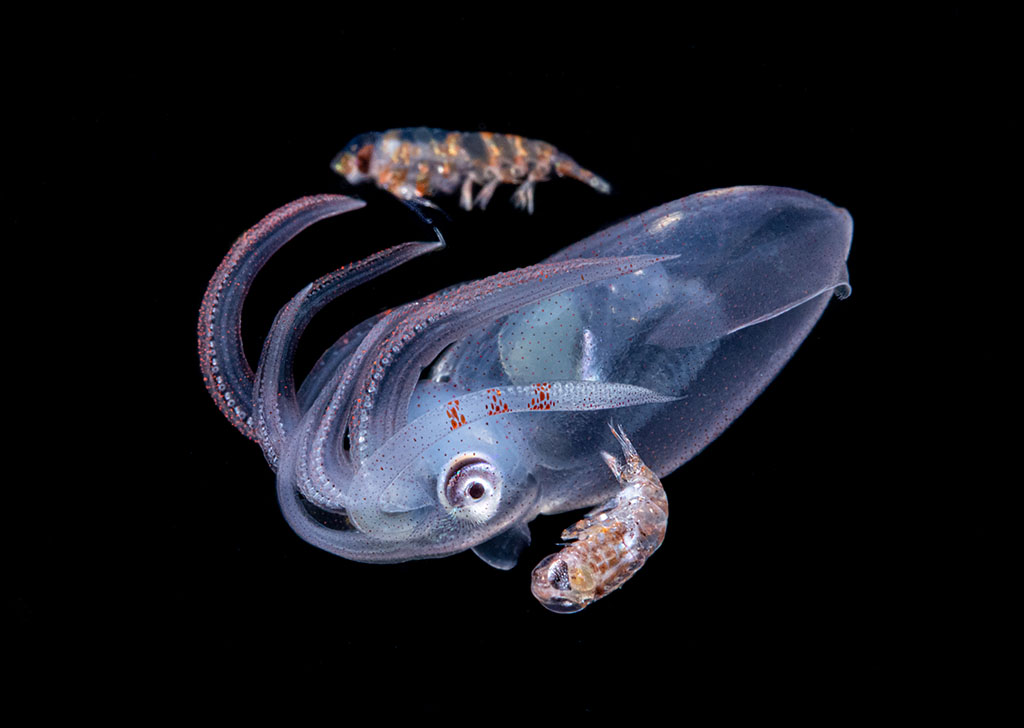
EOS 5D Mark IV, EF100mm f/2.8L Macro IS USM, f/25, 100mm, 1/250sec, ISO 500
Diamond Squid and Amphipods
With a strobe and a camera in hand, underwater photographer Lilian Koh dived into the mysterious ocean years ago and has never looked back since. Her infatuation around tiny sea creatures grew with every macro shot she took and eventually gained herself a following on her social media platforms. Lilian has received multiple prestigious photography awards and has had her work featured in many magazines.
We caught up with her to hear her tips and fascinating experiences in underwater macro photography.
1. Did your love for diving come before your love for photography or the other way around?
My love for diving comes before my love for photography, and my love for photography starts underwater before I start photographing on land.
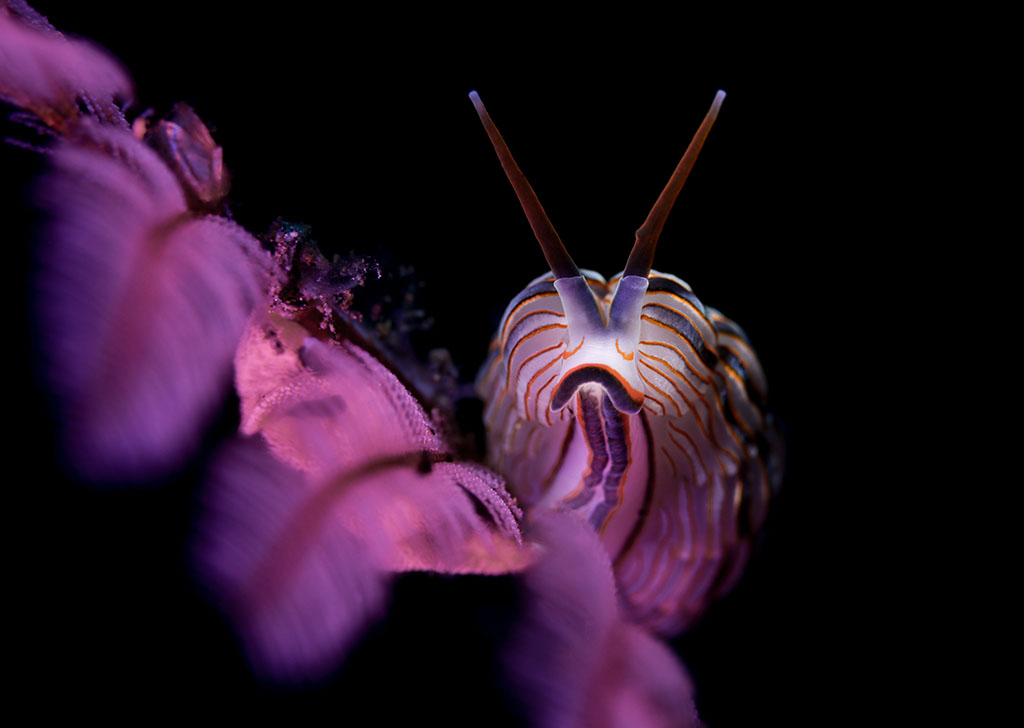
EOS 80D, EF100mm f/2.8L Macro IS USM, f/5.6, 100mm, 1/250sec, ISO 100
Donut Nudibranch
2. What is your most memorable underwater shot, and why does it stand out for you?
It was a slow night with little-to-no sea critter activities during one of my Blackwater dives in Anilao, Philippines. I had a certain image in my mind that I wanted to create and was looking for a suitable subject for it. Towards the end of the diving session, we found a Wunderpus Photogenicus larvae at 25 meters and I had 10 mins to photograph it before I ran out of bottom time (bottom time is the timeframe from when one descends underwater to the start of ascending towards the water’s surface). I am glad that I was able to capture the image I had in my mind and how it turned out.
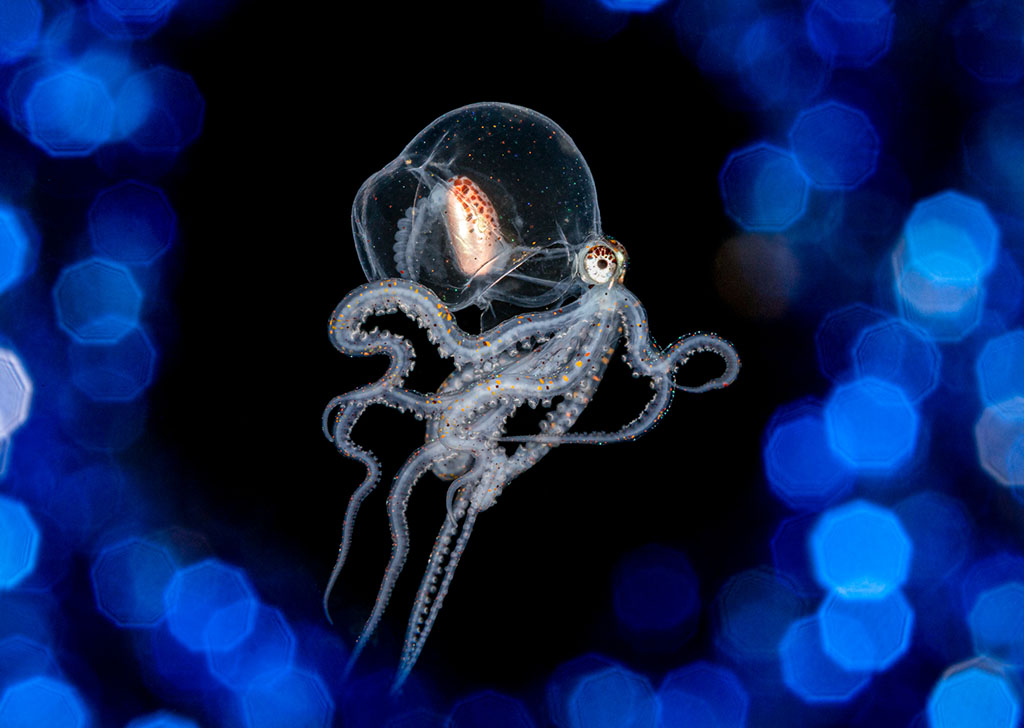
EOS 5D Mark IV, EF100mm f/2.8L Macro IS USM, f/20, 100mm, 1/250sec, ISO 200
Wunderpus Photogenicus larvae
3. We noticed that there are blue spots around the critter. Can you share with us how you achieved this shot (above)?
I customised the bling effect in front of my lens using reflective metallic pipe cleaners. I improvised it along the way and made it stay in one spot so it would not float away while I was photographing the critter.

EOS 5D Mark IV, EF100mm f/2.8L Macro IS USM, f/10, 100mm, 1/250sec, ISO 100
Whip Coral Shrimp
4. For people trying out underwater photography for the first time, what would you say is the biggest challenge they will face, and what is your advice to overcoming it?
I would say that the biggest challenge for first-time underwater photographers is getting used to having additional equipment with them (diving equipment, strobe etc). You will also need to be able to control your buoyancy well as that will help to stabilise yourself while photographing the sea critters. Any slight movement can cause your image to be out of focus or even scare your subjects away.
My advice is to dive and shoot as much as you can to grow more comfortable while understanding how your camera performs underwater.

EOS 5D Mark IV, EF100mm f/2.8L Macro IS USM, f/13, 100mm, 1/250sec, ISO 100
Fish eat fish
5. Underwater creatures are extremely shy and sensitive to light. How do you manage to seek them out and photograph them?
Oh yes, some critters are extremely shy but if you keep your movements as gentle as possible, they will soon get used to your presence and you being around. Approach them slowly so you do not pose as a threat, then they won’t be spooked out. A good dive guide will also help with identifying well-camouflaged critters.
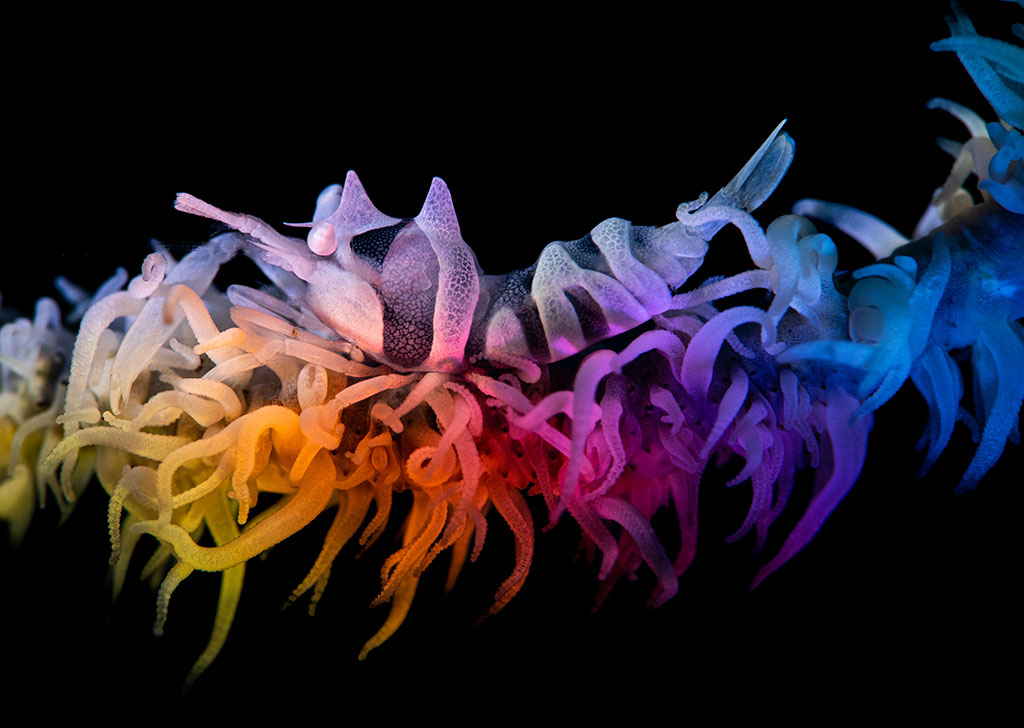
EOS 5D Mark IV, EF100mm f/2.8L Macro IS USM, f/18, 100mm, 1/250sec, ISO 200
White whip coral shrimp
6. As unpredictable and mysterious as the ocean is, have there been any close calls regarding your safety?
So far, there haven’t been any close calls regarding my safety. I tend to stay in a small area for a long time looking for critters and observing their behaviour in their natural habitat.
However, every underwater photographer should always ensure their safety by regularly checking the air and bottom time, and not get carried away with photographing the animals.
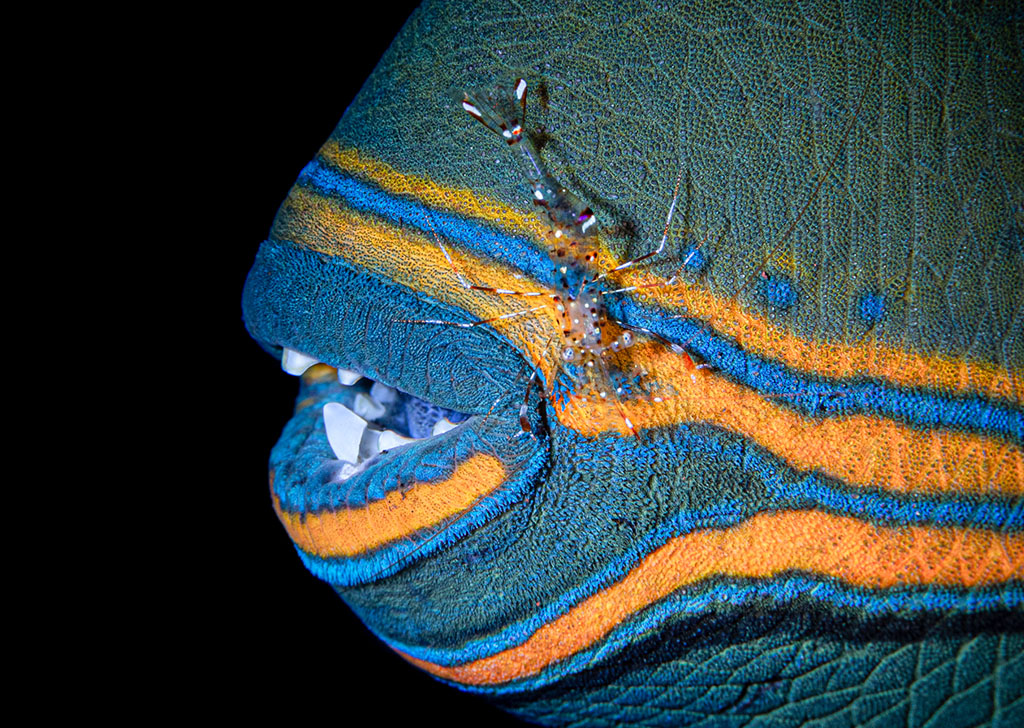
EOS 5D Mark IV, EF100mm f/2.8L Macro IS USM, f/10, 100mm, 1/160sec, ISO 200
Triggerfish with Cleaner Shrimp
7. How long is your average time spent on an underwater photoshoot session, and how is that process for you?
It depends on the dive site and how deep the critters are located, but a tank of air will usually last me approximately 80 to 120 mins for macro photography. Most of the time I will dive without having any prior plans on what kind of critters I want to photograph or ideas I want to create. I will usually get inspiration from the critters available and their environment before starting my thinking process.
At times, I have a certain image that I want to create and the challenging part is finding the right critter for it. If a critter is worth investing my whole dive, I would stay with it to try different lighting, techniques and angles. If I am unsatisfied with the images I took, I will go back to the same spot for the same subject for at least two more dives.

EOS 5D Mark IV, EF100mm f/2.8L Macro IS USM, f/22, 100mm, 1/250sec, ISO 500
Paper Nautilus
8. What are the five items you would never leave out when preparing for an underwater photoshoot?
- SD card
- Camera Battery
- Strobes
- Snoot torches
- My brain...somehow our brain works slower underwater and one tends to forget or can’t ideate as quickly as we can on dry land
9. What gear do you use most for underwater photography
It will be my Minigear MS-03 Snoot Torch. It allows me to manipulate lighting and showcase the subject without all the messy surroundings.
10. Favourite Canon camera and lenses and why
I like to use my Canon 5D Mark IV and Canon EF 100mm f/2.8 Macro USM Lens. They’re really fast at focusing and work great in low-light conditions.
11. Among the many macro underwater shots, we saw that you dabble in underwater fashion/portraiture photography as well. Can you tell us more about those shoots?
I am constantly looking for new challenges and after focusing on macro subjects for several years, I had the opportunity to finally try something new. I enjoyed the interactions with my models and the creativity that I'm able to explore beyond macro shoots. These shots were taken during a dive trip in Bali.
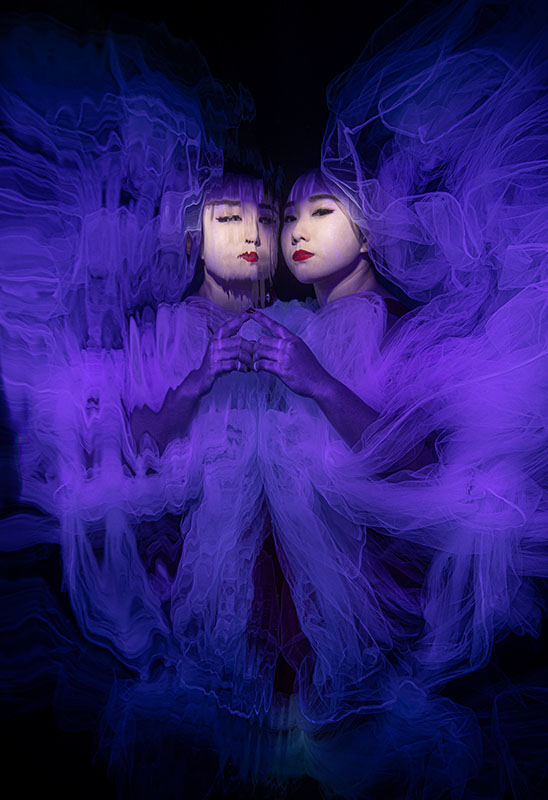
EOS 5D Mark IV, EF16-35mm f/2.8L III USM, f/6.3, 18mm, 1/160sec, ISO 200
12. When conceptualising these fashion/portraiture shoots, what are the key factors that you’ll take into consideration, and why?
Preparations - props, outfits & waterproof makeup is important. You need to source and prepare everything, from hiring models and professional makeup artists to acquiring camera equipment in advance before the shoot.
Lighting - this is the most essential part of underwater portrait photography. You need to know how to make use of natural light or artificial light source as it sets the mood for your images.
Composition - How to frame the model, what kind of poses, lighting position etc... All these need to be communicated to your model and team for them to understand and perform underwater.
If you’re interested in attempting underwater photography and would like to find out more, read similar articles here:
How to Set Up a Mirrorless Camera for an Underwater Photoshoot
Beginner's Guide to Underwater Macro Photography
4 Important Things to Remember When Photographing Underwater
5 Things to Note When Composing Your Shots Underwater




































